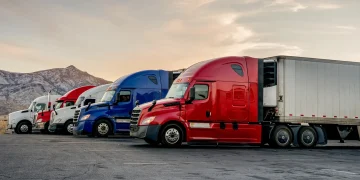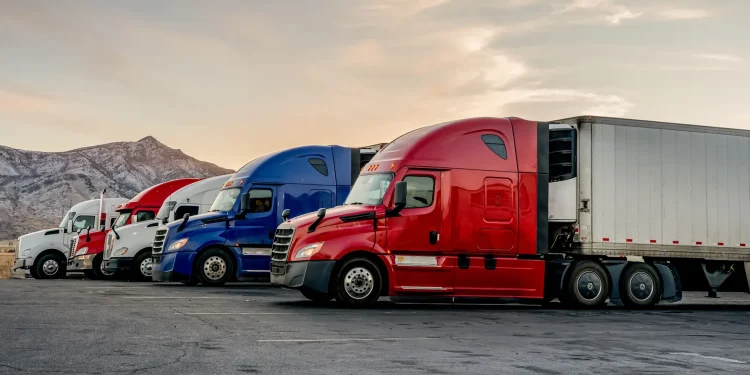By Maria Kalamatas | July 28, 2025
Chicago, July 28 — The American freight market is breaking into two distinct tracks. Regional carriers handling short-haul loads are holding their ground, while long-haul operators are wrestling with sliding rates, heavier regulatory costs, and mounting pressure on margins.
“Local freight remains stable because demand for goods within regional hubs hasn’t fallen off,” said Nathan Cole, senior analyst at Midwest Freight Advisory. “But the long-distance sector is a different story. Rates on some coast-to-coast routes have dropped by nearly 12 percent compared to last year, and operators are fighting higher insurance premiums, labor costs, and new emissions standards.”
Why Regional Freight Is Resilient
Shipments traveling fewer than 300 miles — typical for short-haul operations — continue to benefit from the growth in e-commerce and nearshoring. Retailers moving goods between distribution centers and urban delivery points are keeping regional lanes busy.
Fleet managers in Illinois and Texas report utilization rates above 90 percent for short-haul routes, with pricing holding steady despite broader freight softness.
Long-Haul Carriers Under Pressure
The picture changes for longer routes. Cross-country lanes, especially those linking the Midwest with the West Coast, are contending with oversupply after large fleets expanded aggressively during the post-pandemic freight boom of 2021–2023.
Although fuel costs have leveled off, driver wages are up 7 percent since January, squeezing profits. “We’re seeing carriers operating at break-even levels, and some below that,” Cole noted. “Unless they cut costs or consolidate, many won’t survive the next two quarters.”
Adaptation Through Technology
Carriers are increasingly relying on route optimization software, automated load-matching, and intermodal partnerships with rail providers to reduce costs and keep trucks full. Some are shifting low-margin freight to rail entirely, preserving road assets for higher-value lanes.
“In today’s market, it’s not about owning the most trucks,” Cole said. “It’s about who can adapt quickest and run the leanest operation.”
Why It Matters:
The divide between regional and national freight is forcing a rethink of strategy across U.S. trucking. Those that can adapt to efficiency-driven models are poised to weather the storm, while others risk being swept up in a new wave of industry consolidation.























